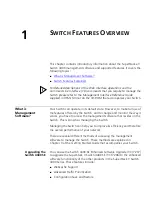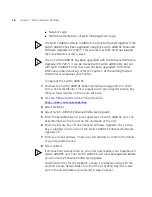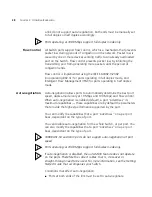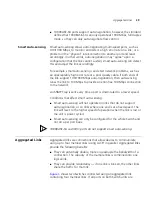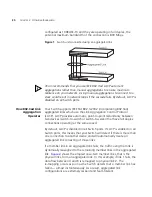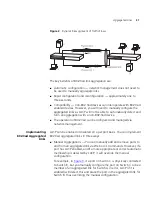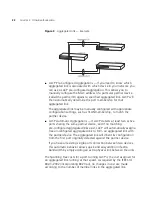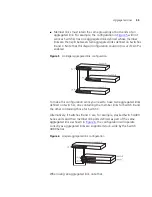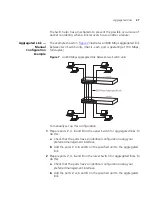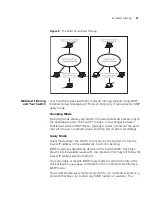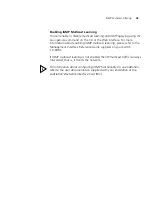
Aggregated Links
29
■
1000BASE-SX ports support auto-negotiation, however, the standard
defines that 1000BASE-SX can only operate at 1000 Mbps, full duplex
mode, so they can only auto-negotiate flow control.
Smart Auto-sensing
Smart auto-sensing allows auto-negotiating multi-speed ports, such as
100/1000 Mbps, to monitor and detect a high error rate on a link, or a
problem in the “physical” interconnection to another port and react
accordingly. In other words, auto-negotiation may “agree” upon a
configuration that the link cannot sustain; smart auto-sensing can detect
this and adjust the link accordingly.
For example, smart auto-sensing can detect network problems, such as
an unacceptably high error rate or a poor quality cable. If both ends of
the link support 100/1000 Mbps auto-negotiation, then auto-sensing
tunes the link to 100 Mbps to provide an error-free 100 Mbps connection
to the network.
An SNMP Trap is sent every time a port is down-rated to a lower speed.
Conditions that affect smart auto-sensing:
■
Smart auto-sensing will not operate on links that do not support
auto-negotiation, or on links where one end is at a fixed speed. The
link will reset to the higher speed of operation when the link is lost or
the unit is power cycled.
■
Smart auto-sensing can only be configured for the whole Switch and
not on a per port basis.
1000BASE-SX and GBIC ports do not support smart auto-sensing.
Aggregated Links
Aggregated links are connections that allow devices to communicate
using up to four member links (using LACP) in parallel. Aggregated links
provide the following benefits:
■
They can potentially double, triple or quadruple the bandwidth of a
connection. The capacity of the multiple links is combined into one
logical link.
■
They can provide redundancy — if one link is broken, the other links
share the traffic for that link.
Figure 1
shows two Switches connected using an aggregated link
containing four member links. If all ports on both Switch units are
Summary of Contents for 3C17205-US - Corp SUPERSTACK 3 SWITCH 4400...
Page 8: ...GLOSSARY INDEX...
Page 14: ...14...
Page 26: ...26 CHAPTER 1 SWITCH FEATURES OVERVIEW...
Page 44: ...44 CHAPTER 3 USING MULTICAST FILTERING...
Page 55: ...How STP Works 55 Figure 13 STP configurations...
Page 58: ...58 CHAPTER 4 USING RESILIENCE FEATURES...
Page 84: ...84 CHAPTER 7 STATUS MONITORING AND STATISTICS...
Page 92: ...92 CHAPTER 8 SETTING UP VIRTUAL LANS...
Page 98: ...98 CHAPTER 9 USING WEBCACHE SUPPORT...
Page 120: ...120 CHAPTER 12 POWER MANAGEMENT AND CONTROL...
Page 122: ...122...
Page 126: ...126 APPENDIX A CONFIGURATION RULES...
Page 134: ...134 APPENDIX B NETWORK CONFIGURATION EXAMPLES...
Page 150: ...150 GLOSSARY...

